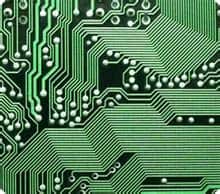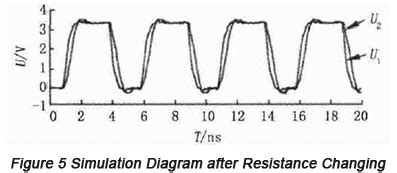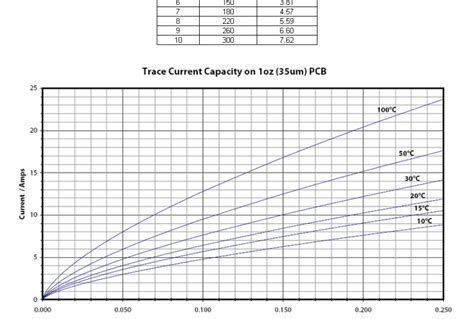Introduction
Printed Circuit Board (PCB) design is a critical aspect of electronic product development. The process of creating a functional PCB involves multiple iterations to refine the design, test its functionality, and ensure it meets the required specifications. Traditionally, this iterative process has been time-consuming and resource-intensive, often leading to delays in product development and increased costs. However, with the advent of cloud-based solutions, PCB prototype iteration speed can be significantly improved, enabling faster time-to-market and reduced development costs.
In this article, we will explore the various ways in which cloud solutions can help increase PCB prototype iteration speed. We will discuss the benefits of using cloud-based PCB design tools, the advantages of cloud-based collaboration, and the role of cloud manufacturing in accelerating PCB Prototyping. Additionally, we will provide a comprehensive FAQ section to address common questions related to PCB iteration and cloud solutions.
The Importance of PCB Iteration Speed
PCB iteration speed refers to the time it takes to complete one cycle of the PCB design process, from conceptualization to prototyping and testing. In today’s fast-paced electronic product development landscape, the ability to quickly iterate on PCB designs is crucial for several reasons:
-
Faster time-to-market: Rapid PCB iteration allows companies to bring their products to market faster, gaining a competitive edge and capturing market share.
-
Cost reduction: Efficient PCB iteration processes help reduce development costs by minimizing the time and resources required for each iteration cycle.
-
Improved product quality: Faster iteration cycles enable more thorough testing and refinement of PCB designs, resulting in higher-quality final products.
-
Increased innovation: Quick PCB iteration encourages experimentation and innovation, as designers can easily test and validate new ideas and concepts.

Cloud-Based PCB Design Tools
One of the primary ways in which cloud solutions can increase PCB prototype iteration speed is through the use of cloud-based PCB design tools. These tools offer several advantages over traditional desktop-based design software:
Accessibility and Collaboration
Cloud-based PCB design tools allow teams to access their design files from anywhere, at any time, using any device with an internet connection. This enables seamless collaboration among team members, regardless of their physical location. Designers can work on the same project simultaneously, share feedback, and make real-time updates, significantly reducing the time required for each iteration cycle.
Scalability and Performance
Cloud-based PCB design tools leverage the power of cloud computing to offer superior performance and scalability compared to desktop-based software. With the ability to harness the processing power of remote servers, designers can work with large, complex PCB designs without experiencing performance issues or delays. Additionally, cloud-based tools can easily scale to accommodate growing design teams and increasing project complexity.
Automatic Updates and Maintenance
Another advantage of cloud-based PCB design tools is that they are automatically updated and maintained by the service provider. This eliminates the need for designers to manually install updates or worry about compatibility issues, saving valuable time and ensuring that everyone on the team is always working with the latest version of the software.
Integration with Other Tools
Cloud-based PCB design tools often offer seamless integration with other cloud-based tools and services, such as version control systems, project management platforms, and manufacturing partners. This integration streamlines the entire PCB development process, from design to manufacturing, reducing the time and effort required for each iteration cycle.

Cloud-Based Collaboration
In addition to the benefits offered by cloud-based PCB design tools, cloud solutions also enable more efficient collaboration among team members, further increasing PCB prototype iteration speed.
Real-Time Communication
Cloud-based collaboration platforms offer real-time communication tools, such as chat, video conferencing, and screen sharing, allowing team members to discuss design issues, share ideas, and resolve problems quickly and efficiently. This real-time communication helps reduce the time required for each iteration cycle by enabling faster decision-making and problem-solving.
Centralized Data Storage
Cloud solutions provide a centralized repository for storing PCB design files, documentation, and other project-related data. This ensures that all team members have access to the latest version of the design files and can easily track changes and revisions. Centralized data storage also eliminates the risk of data loss or inconsistencies, which can cause delays in the iteration process.
Streamlined Workflows
Cloud-based collaboration tools enable the creation of streamlined workflows that automate repetitive tasks and ensure consistent processes across the team. For example, designers can set up automatic notifications for design reviews, approvals, and manufacturing requests, reducing the time and effort required for each iteration cycle.

Cloud Manufacturing
Cloud manufacturing is another key aspect of increasing PCB prototype iteration speed. By leveraging the power of the cloud, manufacturers can offer faster, more flexible, and more cost-effective PCB prototyping services.
On-Demand Manufacturing
Cloud manufacturing platforms enable on-demand PCB prototyping, allowing designers to submit their design files and receive high-quality PCB prototypes in a matter of days. This on-demand approach eliminates the need for long lead times and minimum order quantities, enabling faster iteration cycles and reducing overall development costs.
Automated Quoting and Ordering
Cloud manufacturing platforms often provide automated quoting and ordering systems, allowing designers to quickly and easily obtain price quotes and place orders for their PCB prototypes. This automation streamlines the procurement process, reducing the time and effort required for each iteration cycle.
Real-Time Order Tracking
Cloud manufacturing platforms also offer real-time order tracking, enabling designers to monitor the progress of their PCB prototypes throughout the manufacturing process. This transparency helps teams plan and manage their iteration cycles more effectively, as they can easily track the status of their prototypes and adjust their timelines accordingly.
FAQs
-
Q: How do cloud-based PCB design tools differ from traditional desktop-based software?
A: Cloud-based PCB design tools are accessed via the internet and run on remote servers, while desktop-based software is installed and run on local computers. Cloud-based tools offer improved accessibility, collaboration, scalability, and performance compared to desktop-based software. -
Q: Can cloud-based PCB design tools be used offline?
A: Some cloud-based PCB design tools offer offline capabilities, allowing designers to work on their projects even without an internet connection. However, the full range of features and benefits, such as real-time collaboration and automatic updates, may not be available offline. -
Q: How secure are cloud-based PCB design tools and collaboration platforms?
A: Reputable cloud-based PCB design tools and collaboration platforms employ robust security measures, such as data encryption, secure communication protocols, and regular security audits, to protect user data and ensure the confidentiality of PCB designs. -
Q: Can cloud manufacturing platforms handle complex or high-volume PCB prototyping projects?
A: Yes, most cloud manufacturing platforms are equipped to handle a wide range of PCB prototyping projects, from simple to complex designs and low to high volumes. However, it is always best to discuss your specific requirements with the manufacturing partner to ensure they can meet your needs. -
Q: How much do cloud-based PCB design tools and manufacturing services cost compared to traditional methods?
A: The cost of cloud-based PCB design tools and manufacturing services varies depending on the specific provider and the scale of the project. However, in many cases, cloud-based solutions can be more cost-effective than traditional methods, as they eliminate the need for upfront investments in hardware, software, and infrastructure, and offer more flexible pricing models based on usage.
Conclusion
Cloud solutions have revolutionized the way PCB prototypes are designed, collaborated on, and manufactured, offering numerous benefits that can significantly increase PCB prototype iteration speed. By leveraging cloud-based PCB design tools, collaboration platforms, and manufacturing services, electronic product development teams can streamline their iteration processes, reduce development costs, and bring their products to market faster.
As the demand for faster, more efficient PCB prototyping continues to grow, the adoption of cloud solutions is likely to increase, driving further innovation and improvements in the PCB design and manufacturing industry. By embracing these cloud-based technologies and best practices, companies can gain a competitive edge and deliver high-quality electronic products to their customers in record time.

No responses yet